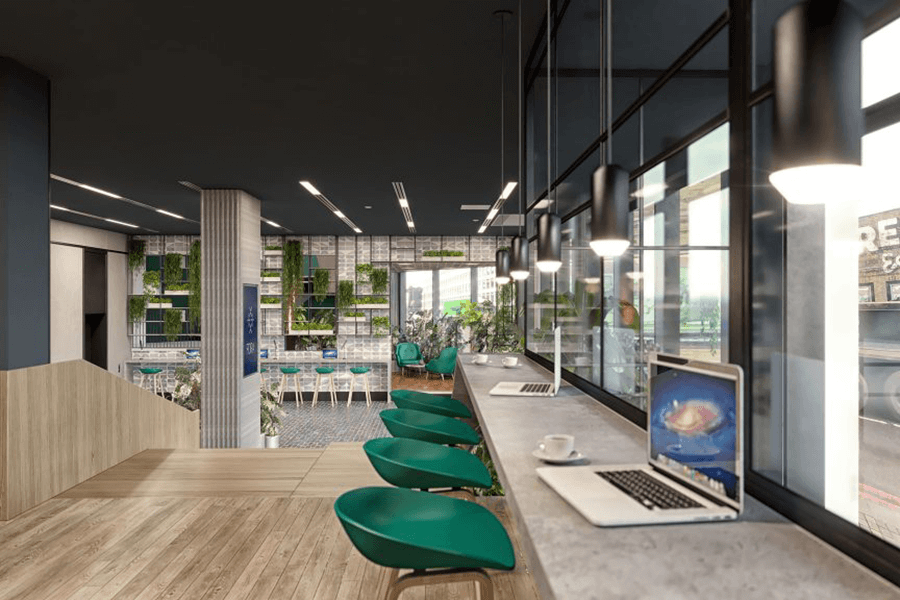When the Covid-19 pandemic hit in early 2020, it was clear that the workspace was going to change dramatically. Production lines, workplace culture, and the regular 9-5 ground to a halt for most, as lockdowns, isolation and a change in the mindset of many employees and employers took place, the workplace was going to change. Now employers are eager to get workers back on location, seeing in many cases a disbanding of what had been great company cultures, community, and a sense of them being another wider family. It’s obvious the core concept of the office has changed, and people aren’t willing to return to what once was. The new normal is here, but is that necessarily a bad thing?
Whilst co-working spaces are not a new thing, the impact of Covid-19 on the concept of the office has had a huge impact. In a report by co-working analysis company Upsuite revealed that the demand for flex offices had increased 40% from the third to the fourth quarter of 2021. The gradual return to the office is continuing, more employees are looking for, and sometimes expecting workplaces that provide flexible solutions.
The pandemic has abruptly pulled society away from the concept of the office as a static space. Gone are the presumptions of uniform desks lined with workers, the post-pandemic office needs to provide dynamic spaces for both comfort and collaboration. In a survey by JLL, 73% of respondents want to work in spaces that are more ‘human’ – places that promote health, well-being, and connection. Flex offices offer all three of these requirements. Open floor plans occupied by multiple companies allow for a connected atmosphere and collaboration, whilst options of private offices, fixed desks, hot desks and bookable conference rooms can be used when privacy is required.
Employees are continuing to have higher demands of the office environment to entice them back from home working. There is more of a focus on the social, perhaps a consequence to the isolation that the pandemic brought for many. Cafés are becoming a common feature of co-working offices, and bars are even making an appearance. But plying employees with comfort food, ping pong tables and alcohol is not the right fit for every company looking at their options. There are many options out there from the finest levels of hospitality and design to bargain basement options. Flex operators offer all levels of culture too, employers need to make sure their spaces reflect their employees’ needs and get the right balance between a workplace and not a distractive fun house.
Flex operators that have understood cultures are creating spaces that are all about great ergonomics, with a focus on natural lighting, air quality, and spaces to unplug from intensity. The pandemic opened many workers up to the possibility of a better work-life balance, and the flex office operators are eager to cater to these needs.

Many flex offices are also utilising a range of technologies, such as occupancy solutions, CRM systems, environmental sensors and booking systems, to monitor and manage their buildings efficiency. Co-working operators have seen the need for technology providers to work collaboratively and mesh together the data sets to ultimately deliver the best experiences for their members, whilst delivering seamless systems enabling operators to manage their buildings and growth. Gimmicks like free alcohol may gain headlines, but those who really have their finger on the pulse of co-working know it’s about delivering options for employees to perform better.

Whilst the switch to flex offices from more conventional spaces can appear daunting to some companies, employee sentiment regarding hybrid working is consistent – no one wants to return to the office unless they evolve. A survey by Owl Labs found that over a third of workers were willing to take a pay cut of up to 5% in order to keep the option to work remotely.
Ultimately, the hybrid model of work shows no sign of stopping any time soon. Even beyond the pandemic, hybrid working looks set to stay, so it’s imperative that companies get on board with new approaches to office space. Flex offices are one vital part of the solution. Providing collaborative, comfortable, and efficient spaces may just be the key component to keeping employees during such turbulence.

Share your thoughts
No Comments
Sorry, the comment form is closed at this time.